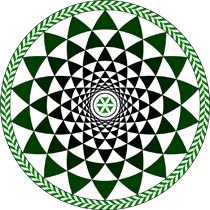Speaker
Ms
Lívia Lederová
(Institute of Physics, P. J. Šafárik University, Park Angelinum 9, 040 01 Košice, Slovak Republic)
Description
`In the last decades, two-dimensional (2d) quantum antiferromagnetic systems have received a significant amount of theoretical and experimental interest [1]. The manifestation of a low-dimensionality in real compounds can be seen at temperatures disturbing interlayer interactions and it predetermines 1d, 2d magnetic systems for observation of interesting physical effects due to quantum fluctuations which do not play significant role in most of 3d magnets. Compounds with high crystal symmetry and strong spatial anisotropy approximating nearly ideal 2d antiferromagnets are characterized by the easy-plane spin anisotropy which at sufficiently low temperatures induces a topological Berezenskii-Kosterlitz-Thouless (BKT) phase transition.`
`One of the low-dimensional magnetic systems is an organo-metallic compound Cu($\textit{tn}$)Cl$_2$ ($tn$ = C$_3$H$_{10}$N$_2$). Previous thermodynamic studies revealed high measure of spatial anisotropy of exchange coupling manifesting at helium temperatures while no phase transition to long range order was observed down to 50 mK. Application of magnetic field induced a response characteristic for the BKT transition [2].`
`The present study is focused at the modification of exchange interactions in the studied crystal structure by replacement of the organic ligand $\textit{tn}$ by $\textit{en}$ = C$_2$H$_8$N$_2$ with smaller volume. Correspondingly, the enhancement of the interlayer coupling was expected accompanied with the observation of a magnetic phase transition at temperatures higher than 50 mK.`
`While the replacement of $\textit{tn}$ by $\textit{en}$ did not introduce significant changes of the local octahedral environment of Cu(II) ion, the symmetry of crystal structure was lowered from orthorhombic to monoclinic. This change affected magnetic properties of Cu($\textit{en}$)Cl$_2$. Our comparative study of powder susceptibilities and isothermal magnetization surprisingly revealed a significant decrease of exchange coupling, projecting in Curie temperatures $\Theta$ = -4.17 K and -0.75 K for Cu($\textit{tn}$)Cl$_2$ and Cu($\textit{en}$)Cl$_2$, respectively. As expected, $g$-factors determined by a local Cu(II) surrounding, were found very similar, $g$ = 2.01 $\pm$ 0.05 for Cu($\textit{en}$)Cl$_2$ and 2.07 $\pm$ 0.05 for Cu($\textit{tn}$)Cl$_2$. Concerning magnetization studied at 2 K, in magnetic field 5 T, 0.45 $\mu_\mathrm{B}$ and 0.81 $\mu_\mathrm{B}$ was observed for Cu($\textit{tn}$)Cl$_2$ and Cu($\textit{en}$)Cl$_2$, respectively, again indicating weaker magnetic correlations in Cu($\textit{en}$)Cl$_2$. In future, the study of magnetic properties in both magnetic systems will be investigated on the monocrystalline samples.`
`This work has been supported by VEGA grant 1/0269/17 and APVV-14-0073.`
`References`
[1] U. Schollwock, J. Richter, D.J.J. Farnell, R.F. Bishop, `$\textit{Quantum Magnetism}$`, Springer, Berlin (2004).
[2] A. Orendáčová, E. Čižmár, L. Sedláková, J. Hanko, M. Kajňáková, M.Orendáč, A. Feher, J.S. Xia, L. Yin, D.M. Pajerowski, M.W. Meisel, V. Zeleňák, S. Zvyagin, and J. Wosnitza, `$\textit{Phys. Rev. B}$` `$\textbf{80}$`, 144418 (2009).
Author
Ms
Lívia Lederová
(Institute of Physics, P. J. Šafárik University, Park Angelinum 9, 040 01 Košice, Slovak Republic)
Co-authors
Alexander Feher
(Institute of Physics, P. J. Šafárik University, Park Angelinum 9, 040 01 Košice, Slovak Republic)
Dr
Alžbeta Orendačová
(Institute of Physics, P. J. Šafárik University, Park Angelinum 9, 040 01 Košice, Slovak Republic)
Martin Orendáč
(Institute of Physics, P. J. Šafárik University, Park Angelinum 9, 040 01 Košice, Slovak Republic)
Róbert Tarasenko
(Institute of Physics, P. J. Šafárik University, Park Angelinum 9, 040 01 Košice, Slovak Republic)

